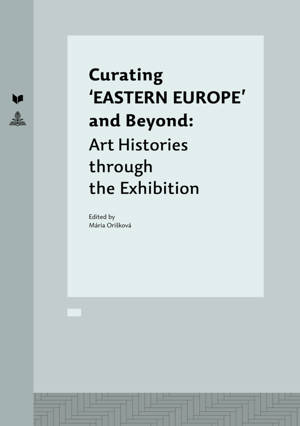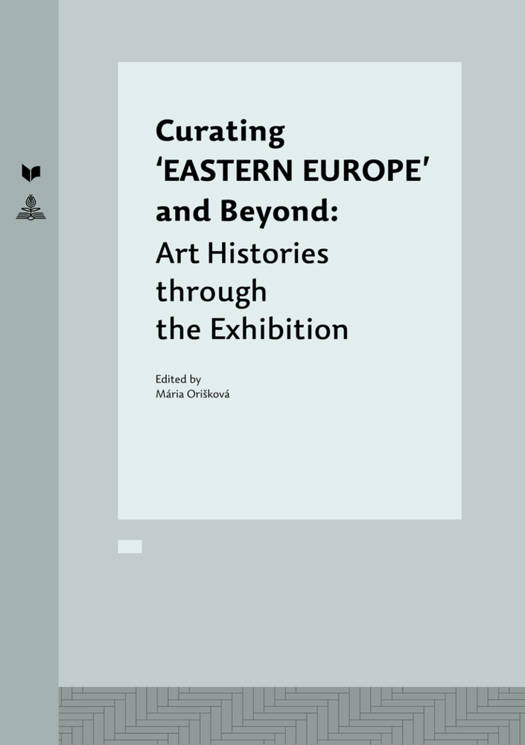
- Afhalen na 1 uur in een winkel met voorraad
- Gratis thuislevering in België vanaf € 30
- Ruim aanbod met 7 miljoen producten
- Afhalen na 1 uur in een winkel met voorraad
- Gratis thuislevering in België vanaf € 30
- Ruim aanbod met 7 miljoen producten
Curating 'Eastern Europe' and Beyond
Art Histories Through the Exhibition
€ 81,45
+ 162 punten
Omschrijving
This project sets up to explore the role exhibitions play in writing art histories of East-Central and South-East Europe after 1989. In the past twenty years we have been witnessing the increased role of exhibition as an important art historical instrument. Not only exhibitions are very much part of the art historical discourse but the role of a curator and the curating itself provide very specific models of art historical knowledge. Curated art exhibitions present a new kind of research and in many cases put under question traditional methods of art history. In spatial organization they can confirm dominant narratives or suggest a completely new readings.
«East European» art history after 1989 has much to do with exhibition making and the academic art history comes to terms with the role of the exhibition in shaping its course. When talking about «re-writing» or revision of art history in the past twenty years one cannot avoid several landmark exhibitions not only as a contribution but shaping processes. For instance, constitutive for East European art history could be considered the following exhibitions: Europa, Europa (Bonn 1994), Der Riss im Raum (Berlin 1994/95), Aspekte/Positionen - 50 Jahre Kunst aus Mitteleuropa 1949-1999 (Vienna 1999), After the Wall: Art and Culture in post-communist Europe (Stockholm 1999/2000), 2000+ARTEAST Collection, Ljubljana (Innsbruck 2000/2001), Ausgeträumt ... (Vienna 2001/2002), In Search of Balkania (Graz 2002), In the Gorges of the Balkan. A Report (Kassel 2003), Blood and Honey: the Future's in the Balkans (Vienna 2003), Kontakt ... aus der Sammlung der Erste Bank-Gruppe (Vienna 2006), Interrupted Histories (Ljubljana 2006), Cold War Modern. Design 1945-1970 (London 2008/2009), Gender Check. Femininity and Masculinity in the Art of Eastern Europe (Vienna 2009/2010), Promises of the Past. A Discontinuous History of Art in Former Eastern Europe (Paris 2010), on the eastern front ... (Budapest, Warsaw 2010), Erased Walls (Poznan 2011), Museum of Parallel Narratives (Barcelona, 2011), Ostalgia (New York, 2011), Museum of Affects, The Present and Presence (MSUM Ljubljana, 2011), RearviewMirror: New Art From Central and Eastern Europe (Toronto, Alberta, 2011-12), Spirits of Internationalism (Eindhoven, Antwerp, 2012), etc. Surely, many different exhibitions could be put on the list. Moreover, East European art has been exhibited in the global context (Global Conceptualism, New York 1999, Global Feminisms, New York, 2007) or within different biennials around the world (not only Venice Biennial and Documenta but Istanbul, Tirana, Prague and of course Manifesta).
Crucial for this book project is mapping changes and transformations of the exhibition discourse via different kinds of curated exhibitions: inside and outside of museum/gallery space, in alternative spaces, within biennials or collaborative projects. The exhibition as a medium, a site of experiment or a platform of a paradigm shift is going to be examined and critically reflected. Not only exhibition formats, structures, models, concepts, genres or topics but different curatorial approaches and curatorial experiences will be the valuable part of this project.
«East European» art history after 1989 has much to do with exhibition making and the academic art history comes to terms with the role of the exhibition in shaping its course. When talking about «re-writing» or revision of art history in the past twenty years one cannot avoid several landmark exhibitions not only as a contribution but shaping processes. For instance, constitutive for East European art history could be considered the following exhibitions: Europa, Europa (Bonn 1994), Der Riss im Raum (Berlin 1994/95), Aspekte/Positionen - 50 Jahre Kunst aus Mitteleuropa 1949-1999 (Vienna 1999), After the Wall: Art and Culture in post-communist Europe (Stockholm 1999/2000), 2000+ARTEAST Collection, Ljubljana (Innsbruck 2000/2001), Ausgeträumt ... (Vienna 2001/2002), In Search of Balkania (Graz 2002), In the Gorges of the Balkan. A Report (Kassel 2003), Blood and Honey: the Future's in the Balkans (Vienna 2003), Kontakt ... aus der Sammlung der Erste Bank-Gruppe (Vienna 2006), Interrupted Histories (Ljubljana 2006), Cold War Modern. Design 1945-1970 (London 2008/2009), Gender Check. Femininity and Masculinity in the Art of Eastern Europe (Vienna 2009/2010), Promises of the Past. A Discontinuous History of Art in Former Eastern Europe (Paris 2010), on the eastern front ... (Budapest, Warsaw 2010), Erased Walls (Poznan 2011), Museum of Parallel Narratives (Barcelona, 2011), Ostalgia (New York, 2011), Museum of Affects, The Present and Presence (MSUM Ljubljana, 2011), RearviewMirror: New Art From Central and Eastern Europe (Toronto, Alberta, 2011-12), Spirits of Internationalism (Eindhoven, Antwerp, 2012), etc. Surely, many different exhibitions could be put on the list. Moreover, East European art has been exhibited in the global context (Global Conceptualism, New York 1999, Global Feminisms, New York, 2007) or within different biennials around the world (not only Venice Biennial and Documenta but Istanbul, Tirana, Prague and of course Manifesta).
Crucial for this book project is mapping changes and transformations of the exhibition discourse via different kinds of curated exhibitions: inside and outside of museum/gallery space, in alternative spaces, within biennials or collaborative projects. The exhibition as a medium, a site of experiment or a platform of a paradigm shift is going to be examined and critically reflected. Not only exhibition formats, structures, models, concepts, genres or topics but different curatorial approaches and curatorial experiences will be the valuable part of this project.
Specificaties
Betrokkenen
- Uitgeverij:
Inhoud
- Aantal bladzijden:
- 208
- Taal:
- Engels
- Reeks:
- Reeksnummer:
- nr. 4
Eigenschappen
- Productcode (EAN):
- 9783631642184
- Verschijningsdatum:
- 9/07/2014
- Uitvoering:
- Hardcover
- Formaat:
- Ongenaaid / garenloos gebonden
- Afmetingen:
- 170 mm x 236 mm
- Gewicht:
- 657 g

Alleen bij Standaard Boekhandel
+ 162 punten op je klantenkaart van Standaard Boekhandel
Beoordelingen
We publiceren alleen reviews die voldoen aan de voorwaarden voor reviews. Bekijk onze voorwaarden voor reviews.








